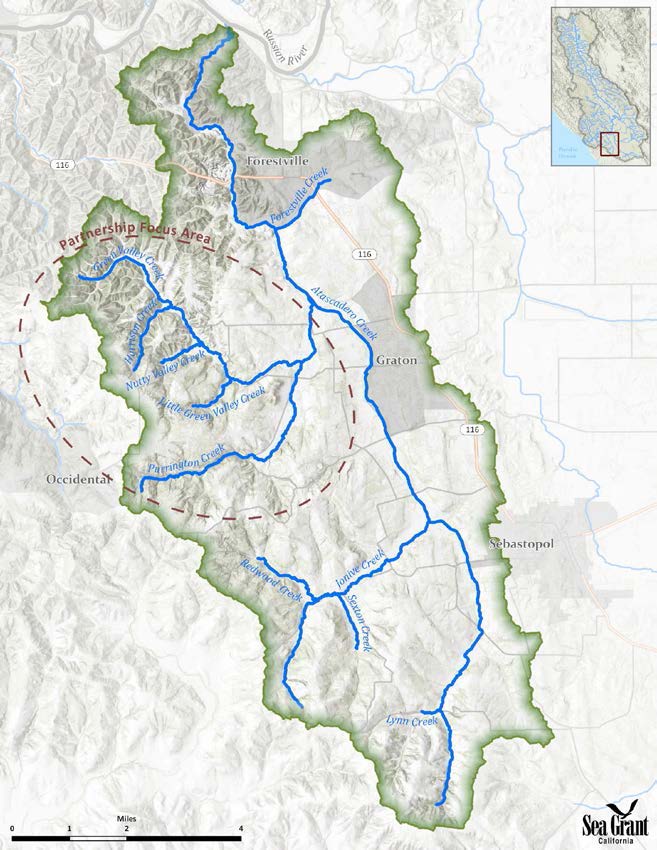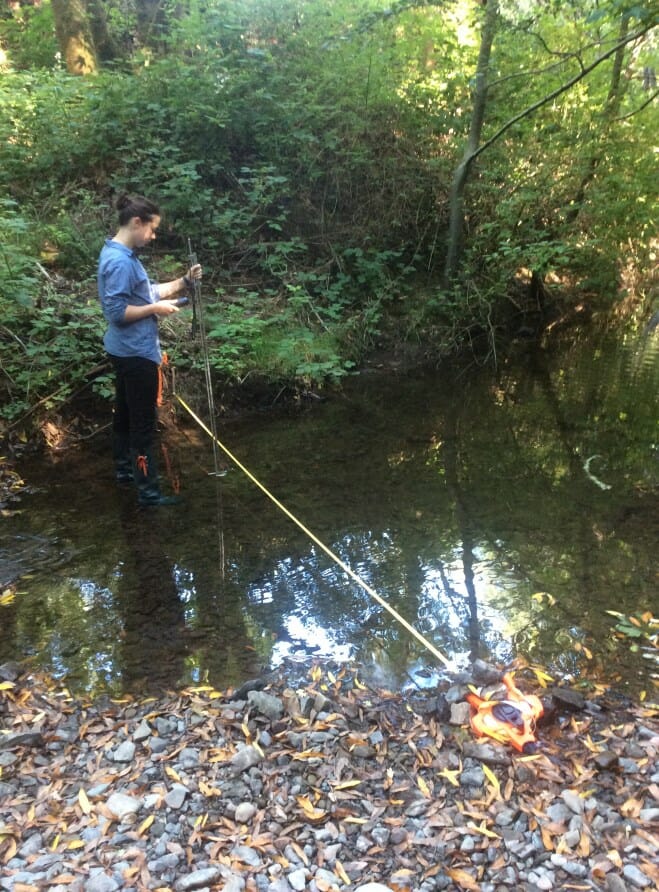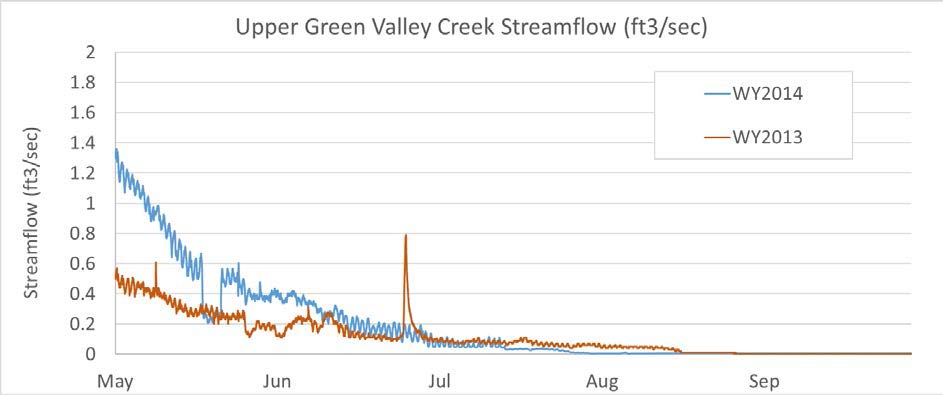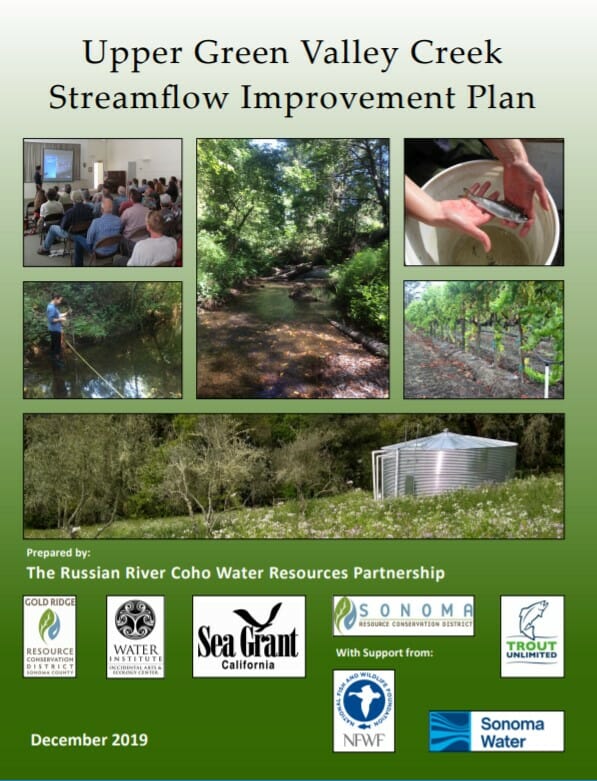Coho salmon are native to California coastal streams north of Monterey Bay, but populations of “silvers” in this region have been declining for decades and the species is now listed as Endangered in the Golden State. Trout Unlimited is heavily invested in cooperative efforts to recover California coho.
One product of this work is development of partnership-driven, science-based plans for boosting dry season streamflows in key coho habitat areas. TU and our partners in the Russian River Coho Water Resources Partnership recently released such a plan — a Streamflow Improvement Plan (SIP) — for Upper Green Valley Creek, an important tributary to the Russian River.

TU is a founding member of the Coho Partnership, which delivers meaningful improvements in streamflow and other habitat conditions that help coho and other native fishes, including steelhead. Other partners in this initiative include California Sea Grant, the Gold Ridge and Sonoma Resource Conservation Districts, and the Occidental Arts and Ecology Center’s Water Institute, with major support from the National Fish and Wildlife Foundation and Sonoma Water.
The Coho Partnership applies a systematic, watershed-scale approach that brings together landowner interests; streamflow, fisheries, and habitat monitoring; technical, planning and financial assistance; and water right and permitting expertise to work with water users to modify water use to improve instream flow in five focal streams within the Russian River watershed.

Streamflow Improvement Plans provide a roadmap for prioritizing and implementing streamflow improvement projects that improve instream flow for coho salmon and ecosystem function. The Upper Green Valley Creek SIP is the fourth such plan the Coho Partnership has produced (others include Grape Creek, Mill Creek, and Dutch Bill Creek). All SIPs are available at: https://cohopartnership.org/sips/.
The Upper Green Valley Creek SIP’s key findings include:
- Upper Green Valley Creek is a critical stream for endangered coho in the Russian River basin.
- Insufficient dry-season streamflow in Green Valley Creek has had a considerable negative impact on rearing juvenile salmonids in most recent years and is a significant limiting factor to local coho salmon recovery.
- Human water use and diversion during the dry season have a demonstrable impact on streamflow in the Upper Green Valley Creek watershed.
- There is sufficient water in the Upper Green Valley Creek watershed to meet human needs on an annual basis if water use is managed according to seasonal availability.
- The Partnership’s suite of current and anticipated future streamflow enhancement projects could cumulatively add sufficient flow for the priority stream reaches to meet estimated pool connectivity thresholds.

The Coho Partnership will continue to work with water users in Upper Green Valley Creek to maintain a flow regime that is protective of the various life history stages of salmon by managing water demand through water conservation, seasonal storage, and other modifications to diversion practices and by augmenting flow through recharge, spring reconnection, and other strategies.
A guiding principle in much of TU’s water work, in California and other states, is that there is enough water to meet the needs of both people and fish—if we better manage how and when we take water from streams. The science—lead by California Sea Grant and TU—that buttresses the Upper Green Valley Creek Streamflow Improvement Plan affirms that this principle is not merely a pie-in-the-sky hope, but a verifiable fact in many of California’s coastal coho streams.



